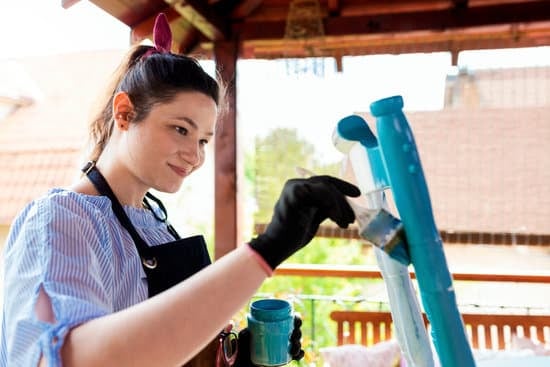Home care services play a vital role in providing support and assistance to individuals who require help with daily activities in the comfort of their own homes. It’s essential to understand how to improve home care services to ensure the highest quality of care for patients.
This article will delve into the current state of home care services, explore best practices, discuss the role of technology, training and education for providers, enhancing communication and coordination, supporting family caregivers, and implementing quality assurance and improvement initiatives.
Home care services encompass a wide range of support, including personal care, medication management, meal preparation, and household chores. As the demand for these services continues to grow, there is an increasing need to enhance the quality and effectiveness of home care. By exploring different ways to improve home care services, we can ensure that patients receive the best possible care while also supporting their family caregivers.
The current state of home care services presents various challenges and shortcomings that impact both patients and caregivers. These challenges include limited resources for training and education for providers, difficulties in effective communication and coordination among caregivers, patients, and healthcare providers, as well as inadequate support for family caregivers. Addressing these issues is crucial in elevating the standard of home care services provided to individuals in need.
The Current State of Home Care Services
Home care services play a crucial role in providing necessary medical and personal assistance to individuals who wish to remain in the comfort of their own homes. However, the current state of home care services is faced with several challenges and shortcomings that need to be addressed in order to improve the quality of care provided to patients.
One of the major challenges is the shortage of skilled and well-trained home care providers, leading to inadequate care and support for patients. Additionally, issues such as lack of standardized practices and limited access to resources further impact the effectiveness of home care services.
These challenges have a significant impact on both patients and caregivers. Patients may experience subpar care, leading to compromised health outcomes and an overall decrease in their quality of life.
Caregivers, on the other hand, often face burnout and stress due to the lack of support and resources available to them. It is evident that there is a need for improvement in various aspects of home care services in order to better cater to the needs of patients and their caregivers.
To address these issues and improve home care services, it is imperative to consider various strategies and best practices that can lead to positive changes within this sector. From implementing technology for remote monitoring and telehealth to providing continuous training and education for home care providers, there are several avenues for improvement that can greatly impact the overall quality of home care services.
| Challenges | Impacts |
|---|---|
| Shortage of skilled providers | Subpar care for patients |
| Lack of standardized practices | Burnout and stress for caregivers |
Best Practices in Home Care
Implementing Patient-Centered Care
Patient-centered care is a best practice in home care services that focuses on the individual needs and preferences of the patient. This approach involves actively involving patients in their own care, respecting their choices, and providing education and support to help them make informed decisions about their health.
By implementing patient-centered care, home care providers can improve the overall quality of care and enhance patient satisfaction. It also leads to better health outcomes and increased adherence to treatment plans.
Promoting Interdisciplinary Collaboration
Another best practice in home care services is promoting interdisciplinary collaboration among healthcare professionals involved in the patient’s care. This includes nurses, therapists, social workers, and other members of the healthcare team working together to develop a comprehensive care plan that addresses the different aspects of the patient’s health and well-being. By fostering collaboration, home care providers can ensure that all aspects of the patient’s care are addressed effectively and efficiently.
Ensuring Continuity of Care
Continuity of care is essential for improving home care services. This best practice involves ensuring seamless transitions between different settings or providers, as well as maintaining ongoing communication and coordination throughout the course of the patient’s care. By ensuring continuity of care, providers can reduce the risk of missed or duplicate services, medication errors, and gaps in treatment. This ultimately leads to improved patient outcomes and satisfaction with home care services.
By implementing these best practices in home care services, providers can improve the quality of care they deliver to patients while also enhancing their overall experience with receiving home-based healthcare services. These practices focus on creating a more personalized approach to caregiving that prioritizes patients’ needs, fosters collaboration among healthcare professionals, and ensures seamless transitions throughout their care journey.
Implementing Technology in Home Care
Technology has revolutionized the way home care services are delivered, offering new opportunities to improve patient outcomes and enhance the overall quality of care. From remote monitoring to telehealth services, technology has the potential to transform the home care industry, making it more efficient, effective, and accessible.
The Role of Technology in Improving Home Care Services
Technology plays a crucial role in improving home care services by providing innovative solutions for both patients and caregivers. Remote monitoring devices allow healthcare providers to track vital signs and health data in real-time, enabling early intervention and proactive care management. Telehealth services enable virtual consultations and remote patient monitoring, reducing the need for in-person visits and improving access to healthcare for patients with limited mobility or living in remote areas.
The Benefits of Using Technology in Home Care
The use of technology in home care offers numerous benefits, including improved patient engagement and empowerment through self-management tools, enhanced medication adherence through digital reminders and tracking systems, as well as increased efficiency and productivity for caregivers through electronic health records and mobile communication platforms. Additionally, technology allows for better coordination and communication among members of the healthcare team, leading to more comprehensive and holistic care for patients.
Challenges in Implementing Technology
While the benefits of technology in home care are significant, there are also challenges associated with its implementation. These may include concerns about data privacy and security, as well as barriers related to digital literacy among both patients and caregivers. Overcoming these challenges requires thoughtful planning, ongoing training, and support for all stakeholders involved in home care services.
Training and Education for Home Care Providers
Continuous training and education for home care providers are crucial in ensuring the delivery of high-quality and efficient care to patients. By equipping caregivers with the necessary knowledge and skills, they can better address the diverse needs of their patients and provide personalized care.
Training programs should cover a wide range of topics, including proper medication management, emergency response protocols, infection control measures, and effective communication strategies. Additionally, ongoing education allows home care providers to stay updated on the latest advancements in medical technology and best practices in the field.
One way to improve home care services is by establishing standardized training requirements for home care providers. This can ensure that all caregivers receive comprehensive training that meets industry standards and regulations. Furthermore, offering opportunities for career development and specialized certifications can empower home care providers to enhance their expertise and deliver specialized services such as dementia care or palliative care.
Another important aspect of training and education for home care providers is the emphasis on empathy and cultural competence. Caregivers should be trained to understand and respect the cultural backgrounds of their patients, as well as their individual preferences and beliefs. This approach not only fosters trust between caregivers and patients but also promotes a more inclusive environment where patients feel valued and understood.
To further improve home care services, organizations should invest in mentorship programs where experienced caregivers can provide guidance and support to new employees. This mentorship model can facilitate knowledge transfer, skill development, and overall professional growth among home care providers. Ultimately, continuous training and education play a significant role in elevating the standard of care provided to individuals receiving home-based services.
Incorporating robust training programs for home care providers is an essential step towards improving overall patient outcomes while also enhancing job satisfaction among caregivers. As the demand for home care services continues to grow, investing in comprehensive training and educational initiatives will be vital in meeting the evolving needs of the aging population and individuals with complex medical conditions.
Enhancing Communication and Coordination
Effective communication and coordination are essential components of providing high-quality home care services. When caregivers, patients, and healthcare providers are able to communicate effectively and coordinate their efforts, the overall quality of care improves, leading to better outcomes for patients. Here are some tips and strategies for improving communication and coordination in home care services:
- Utilize technology: Incorporating the use of communication tools such as teleconferencing, secure messaging platforms, and electronic health records can facilitate seamless communication among caregivers, patients, and healthcare providers.
- Establish clear protocols: Clearly defined protocols for patient care, information sharing, and decision-making help ensure that everyone involved in the home care process is on the same page.
- Encourage open communication: Creating a culture of open communication within caregiving teams allows for feedback, concerns, and ideas to be shared freely, ultimately leading to better collaboration and problem-solving.
In addition to these strategies, it is also important to prioritize regular check-ins between caregivers and healthcare providers. These meetings can help ensure that everyone is aware of the patient’s status and any changes in their condition or care plan. Furthermore, fostering strong relationships among all parties involved in home care not only improves communication but also enhances coordination.
Ultimately, by improving communication and coordination in home care services through the implementation of these strategies, caregivers can provide more effective and personalized care to their patients while promoting positive health outcomes. It is crucial for stakeholders in the home care industry to recognize the significance of effective communication and coordination in delivering high-quality care services.
Implementing these measures will undoubtedly contribute to overall improvements in home care services for both patients and caregivers. By prioritizing effective communication and coordination as integral components of home care provision, we can work towards enhancing the quality of life for those receiving these vital services.
Supporting Family Caregivers
Home care services are crucial for providing necessary support and assistance to individuals who may have difficulty with daily activities due to illness, disability, or aging. In many cases, family members take on the role of caregivers to provide this essential care within the comfort and familiarity of the home environment. However, it is important to recognize the challenges faced by family caregivers and provide them with the necessary support to ensure that they can effectively carry out their responsibilities.
Supporting family caregivers is essential in improving overall home care services. Here are some strategies and resources that can be utilized to provide assistance and encouragement to family caregivers:
- Education and Training: Offering educational programs and training sessions for family caregivers can equip them with the necessary skills and knowledge to address the specific needs of their loved ones. These programs can cover topics such as proper lifting techniques, medication management, and understanding signs of distress.
- Respite Care Services: Providing respite care options allows family caregivers to take a much-needed break from their caregiving duties. This temporary relief enables them to attend to personal matters, rest, or simply recharge, ultimately reducing caregiver burnout.
- Access to Support Groups: Connecting family caregivers with support groups or online communities can provide them with an outlet for sharing experiences, receiving advice from others in similar situations, and gaining emotional support.
In addition to these strategies, it is important for healthcare providers and community organizations to collaborate in offering resources and services tailored specifically for family caregivers. By recognizing the vital role that family members play in home care services and providing them with appropriate support, overall care outcomes can be significantly improved.
Quality Assurance and Improvement
Quality assurance in home care services is essential for meeting the needs of patients and ensuring their safety and satisfaction. It involves the systematic monitoring and evaluation of care delivery to identify areas for improvement and maintain high standards of quality. One key aspect of quality assurance is to regularly assess the performance of home care providers, including their adherence to best practices and guidelines.
To improve home care services, organizations can implement quality improvement initiatives that focus on enhancing the overall patient experience and outcomes. This can include conducting regular assessments of patient satisfaction, implementing evidence-based practices, and utilizing feedback from both patients and caregivers. By continuously striving for improvement, home care services can adapt to the evolving needs of patients and provide more effective and efficient care.
Furthermore, establishing clear protocols for quality assurance can help identify any deficiencies in care delivery and address them promptly. Regular training sessions on quality improvement can also empower home care providers to implement best practices and stay updated on industry standards. By providing ongoing support and resources for quality assurance, organizations can ensure that their home care services are consistently delivering high-quality care to patients.
In addition, fostering a culture of continuous improvement within home care services can lead to better outcomes for patients while also boosting staff morale. Encouraging open communication and collaboration among caregivers, patients, and healthcare providers is vital for identifying opportunities for enhancement in care delivery. By promoting a team-based approach to quality assurance, home care services can effectively address any challenges that arise while working towards providing the best possible care for their patients.
Conclusion and Call to Action
In conclusion, improving home care services is essential for ensuring the well-being and quality of life for patients and their caregivers. By addressing the challenges and shortcomings of current home care services, implementing best practices, utilizing technology, providing continuous training and education for providers, enhancing communication and coordination, supporting family caregivers, and prioritizing quality assurance and improvement initiatives, we can make significant strides in advancing home care services.
It is crucial to recognize the importance of a holistic approach to home care that encompasses not only the physical needs of the patient but also their emotional and social well-being. By focusing on these aspects and implementing best practices in home care, we can ensure that patients receive high-quality care that meets their individual needs.
As we move forward, it is imperative for healthcare organizations, policymakers, and communities to come together to prioritize improving home care services. By taking proactive steps to implement these strategies, we can make a positive impact on the lives of those who rely on home care services. Ultimately, by working collaboratively and continuously striving for improvement, we can enhance the overall quality of home care services for all those who depend on them.
Frequently Asked Questions
How Do I Make My Home Health Agency Stand Out?
Making your home health agency stand out requires a strong focus on customer service and quality care. Providing personalized attention, excellent communication, and going above and beyond for your clients can set you apart from the competition.
What Is Most Difficult Part of Home Care?
The most difficult part of home care is often managing the emotional challenges that come with caring for people in their homes. It can be tough to see clients struggle with their health or to witness difficult family dynamics. Finding a balance between empathy and professionalism is key.
What Is the Most Common Home Care Service?
The most common home care service is often assistance with activities of daily living, such as bathing, dressing, meal preparation, and medication reminders. Many clients require help with these basic tasks in order to maintain their independence at home.

I’m thrilled to have you here as a part of the Remodeling Top community. This is where my journey as an architect and remodeling enthusiast intersects with your passion for transforming houses into dream homes.





